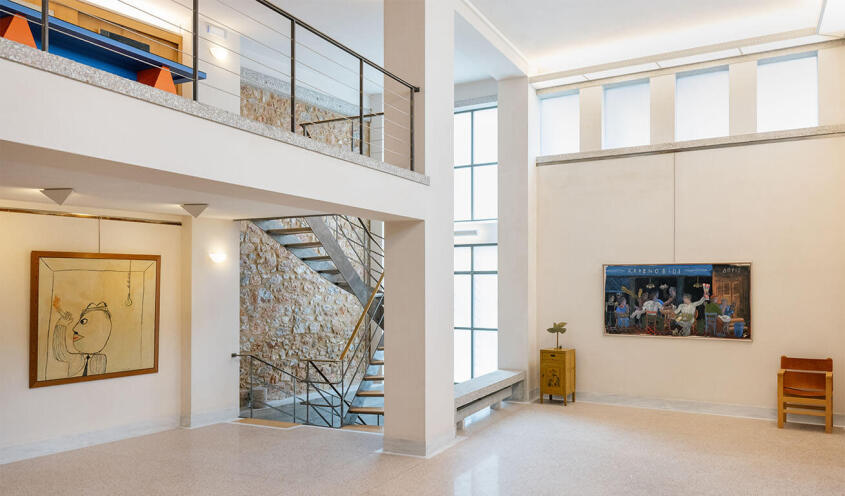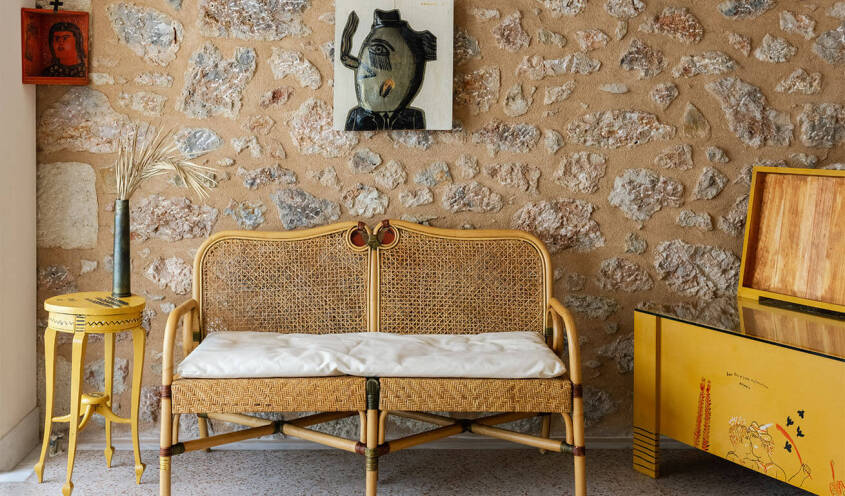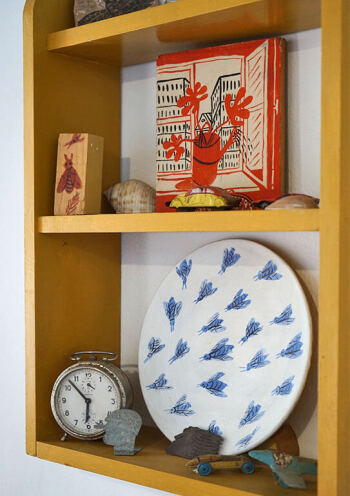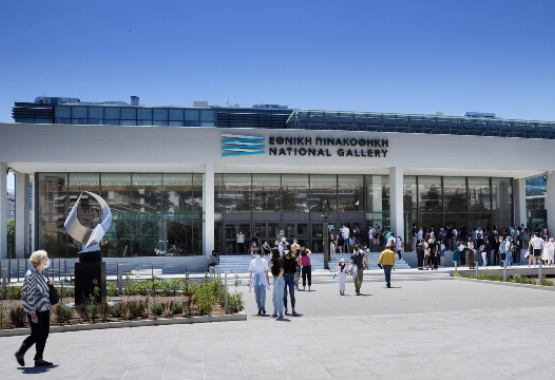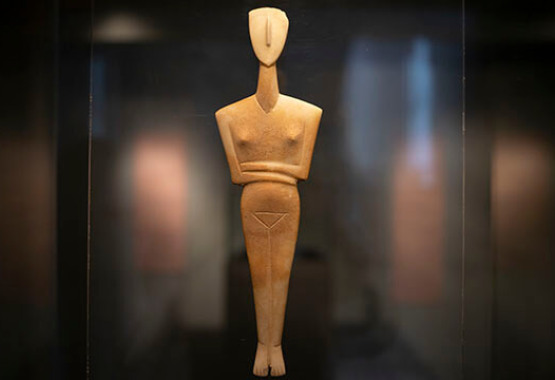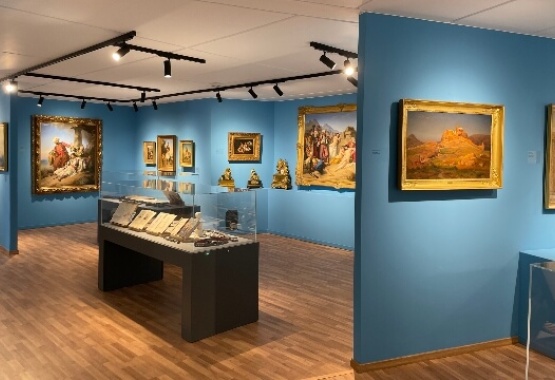
ATHENS
The artist grew up in this vibrant Athenian neighbourhood, during the heyday of Athenian theatres & cinemas. He got acquainted with the local street trades and itinerant workers and vendors such as the milkman and the cobbler. In the late 1970s, the small house was torn down, at his mother’s request, to build a four-storey block of flats, which would provide her children with apartments to live in. Fassianos, who lived in Paris at the time, was devastated as he saw his family home disappear together with his childhood memories. In the late 1980s, Fassianos expressed his desire to Krokos to create a museum which would house his art collection. He wanted to reshape and renovate the building to include a private exhibition space and apartments. For Fassianos, this location was ideal as it was filled with childhood memories and his earliest inspirations, and because of its proximity to the city centre and the National Archaeological Museum.
The challenges, however, of such a project were not to be underestimated, as Krokos would need to work on an existing structure which inevitably presented a number of limitations. Fassianos and Krokos’ shared aesthetic and philosophical principles are evident in this project. The architectural style they wished to follow was simple and plain – as Krokos stated, “Things mustn’t spoil or age badly; they have to look and be clean-cut”.
The space was carefully remodelled using various materials including concrete, stone, mosaic tiles, brick, and plaster, and a palette of earthy shades of grey, red, and ochre. Krokos wanted the structure of the building to be highlighted and the materials to be visible, while Fassianos felt strongly about creating a space in dialogue with his works. The collaborators’ artistic and design sensibilities are apparent in the space’s structure, with various stone masonry finishes and the marble edging framing the terrazzo floor, as well as in details including the elaborate spiral staircase, mosaic works on the floors, fresco paintings on the walls, bronze door handles, and the metal dragon hanging from the basement ceiling, which was designed to hide the cabling. The Alekos Fassianos Museum holds a distinguished place on the contemporary artistic and architectural map of Athens for the masterly corrective intervention to an existing building and the particular and precise crafting of surfaces. It is also one of the few museums in the world in which the collaboration of the artist and the architect underpins the dialogue between the works of art and the space that houses them.
Alekos Fassianos Museum
The Alekos Fassianos Museum was designed and remodelled by architect Kyriakos Krokos, in collaboration with Alekos Fassianos, and it was completed in 1995. The location of the museum is where the artist’s family home used to be back in the 1930s and until the 1970s. It was a typical small neo-classical house with an inner courtyard and a tile roof. The family settled in this house when Alekos’ grandfather, Andreas, was appointed as priest at the church of Agios Pavlos.The artist grew up in this vibrant Athenian neighbourhood, during the heyday of Athenian theatres & cinemas. He got acquainted with the local street trades and itinerant workers and vendors such as the milkman and the cobbler. In the late 1970s, the small house was torn down, at his mother’s request, to build a four-storey block of flats, which would provide her children with apartments to live in. Fassianos, who lived in Paris at the time, was devastated as he saw his family home disappear together with his childhood memories. In the late 1980s, Fassianos expressed his desire to Krokos to create a museum which would house his art collection. He wanted to reshape and renovate the building to include a private exhibition space and apartments. For Fassianos, this location was ideal as it was filled with childhood memories and his earliest inspirations, and because of its proximity to the city centre and the National Archaeological Museum.
The challenges, however, of such a project were not to be underestimated, as Krokos would need to work on an existing structure which inevitably presented a number of limitations. Fassianos and Krokos’ shared aesthetic and philosophical principles are evident in this project. The architectural style they wished to follow was simple and plain – as Krokos stated, “Things mustn’t spoil or age badly; they have to look and be clean-cut”.
The space was carefully remodelled using various materials including concrete, stone, mosaic tiles, brick, and plaster, and a palette of earthy shades of grey, red, and ochre. Krokos wanted the structure of the building to be highlighted and the materials to be visible, while Fassianos felt strongly about creating a space in dialogue with his works. The collaborators’ artistic and design sensibilities are apparent in the space’s structure, with various stone masonry finishes and the marble edging framing the terrazzo floor, as well as in details including the elaborate spiral staircase, mosaic works on the floors, fresco paintings on the walls, bronze door handles, and the metal dragon hanging from the basement ceiling, which was designed to hide the cabling. The Alekos Fassianos Museum holds a distinguished place on the contemporary artistic and architectural map of Athens for the masterly corrective intervention to an existing building and the particular and precise crafting of surfaces. It is also one of the few museums in the world in which the collaboration of the artist and the architect underpins the dialogue between the works of art and the space that houses them.
